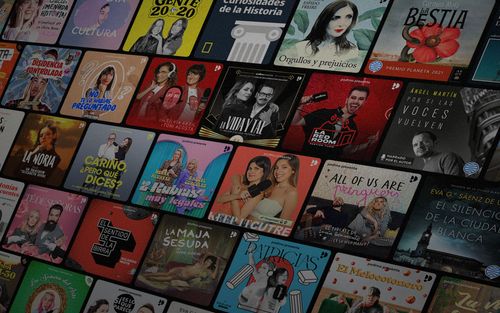What Works II
The NOGGINS AND NEURONS Podcast - Ein Podcast von Stroke & Brain Injury

What Works II DEB: I wanted to talk about MarijuanaPETE: Well. Who doesn’t?DEB: Exactly!PETE: You live in New York man, you can do anything you want! Ohio they’ll string you up but yeah...so what about pot?DEB: Well first of all I learned that it doesn’t cause stroke the way cigarettes do....cigarette smoking...it’s really good for treating other effects beyond the spasticity and things like that. It’s more like anxiety, anger, sadness, frustration, hopelessness, fear, depression types of feelings which I think is really important because if people are feeling those negative types of emotions then it’s harder to participate in your rehabilitation.PETE: I’ve done some talks in Colorado recently and you know there's often therapists from every different kind of facility and I'm like, hey does anybody here um work in skilled nursing....and yeah, yeah they do... so um, are they allowed to smoke pot, I mean like you know, these are people they’re adults... can they smoke pot? They go, yeah, yeah, they can smoke pot. I go, how does that affect rehab? Well they don’t want to go. They just say no...DEB: They’re too chill?PETE: They say no I’m not going anywhere. That's the downside. EPISODE SUMMARY: In this episode of NOGGINS & NEURONS: Stroke and TBI Recovery Simplified, Pete and Deb talk about interventions that do work. In part II we covered: Subconscious mind and stroke recovery Dysarthria Resistance to new ideas, working through it and moving into acceptance The role of research to help us leave our comfort zones Combining interventions to drive neuroplasticity, create home programs and the importance of the therapist/client relationship Letting go of the old you as a means of evolving and progressing through recovery E-stim, functional e-stim and functional improvements along with how to uncomplicate it so therapists use it more Small group of interventions that work and often work better when combined together Acupuncture, acupressure and dry needling along with muscle vibration in stroke recovery Task specific training, the LEAPS Trial, Modified Constraint Induced Therapy, gait and ambulation Mind-Body interventions and Hippo Therapy can improve balance Brain-Computer Interface to improve UE function following stroke Sensory brain areas are neuroplastic and re-training improves joint position sense, light touch, 2-point discrimination, and better Berg Balance scores Physical activity as a cognitive intervention for stroke recovery Marijuana to reduce neurotoxicity and pain as well as decrease depressive and anxiety symptoms You’ll hear more clinical reasoning in action in this second episode of what works as Pete and Deb talk about some commonly used interventions and a few that are less common and what the research says. We talked more about interventions that work well together, creating home programs and novelty in the rehab process. As always, we want to hear your top takeaways! LINKS TO ARTICLES, BOOKS AND OTHER IMPORTANT INFORMATION: Bolognini, N., Russo, C., & Edwards, D. (2017). The Sensory Side of Post-Stroke Rehabilitation Restorative Neurology and Neuroscience (34) 4. 571-586 doi: 10.3233/RNN-150606 Hsieh, Y., Lin, Y., Zhu, J., Wu, C., Lin, Y., & Chen, C. (2020). Treatment Effects of Upper Limb Action Observation Therapy and Mirror Therapy on Rehabilitation Outcomes After Subacute Stroke: A Pilot Study Behavioural Neurology, vol. 2020, Article ID 6250524, 9 pages, 2020. https://doi.org/10.1155/2020/6250524 Ji, H., & Yu, L. (2020). Effect of Yoga Exercise on Cognitive Ability and Motor Function Recovery in Stroke Patients Behavioral Neurology https://doi.org/10.1155/2020/6250524 Lyu, D., Lyu, X., Zhang, Y., Ren, Y., Yang, F. Zhou, L., Zou, Y. et al (2018). Tai Chi for Stroke Rehabilitation: A Systematic Review and Meta-Analysis of Randomized Controlled Trials Frontiers in Physiology 9; 983 doi: 10.3389/fphys.2018.00983\ Zou, L., Yeung, A., Li, C., Chiou, S., Zeng, N., Tzeng, H., Wang, L, et al. (2018)

